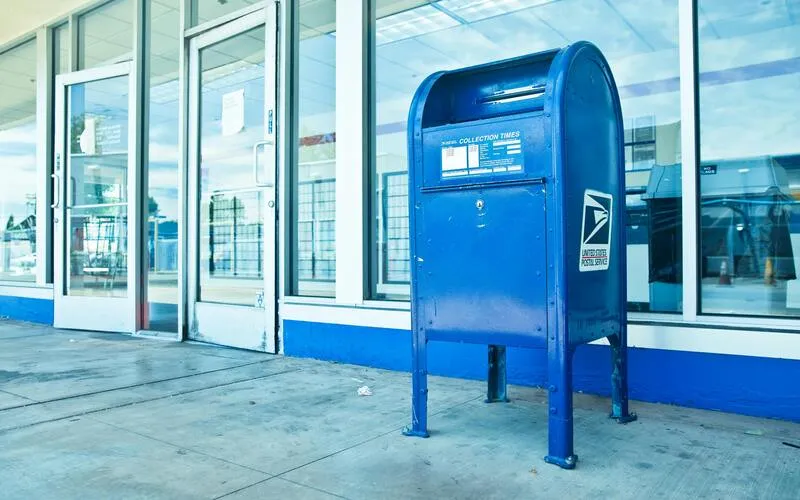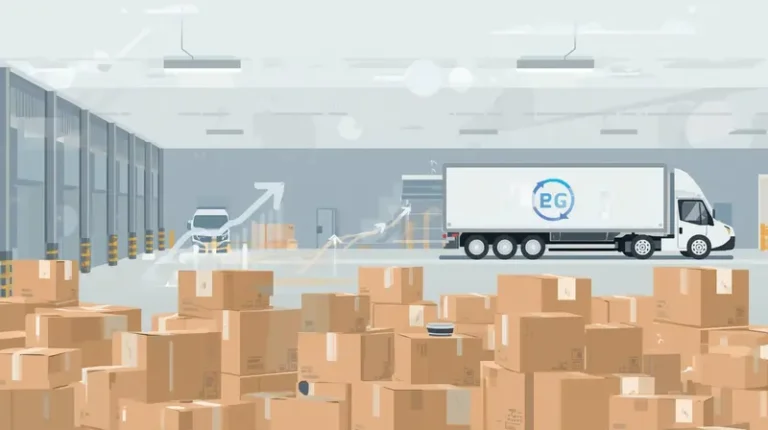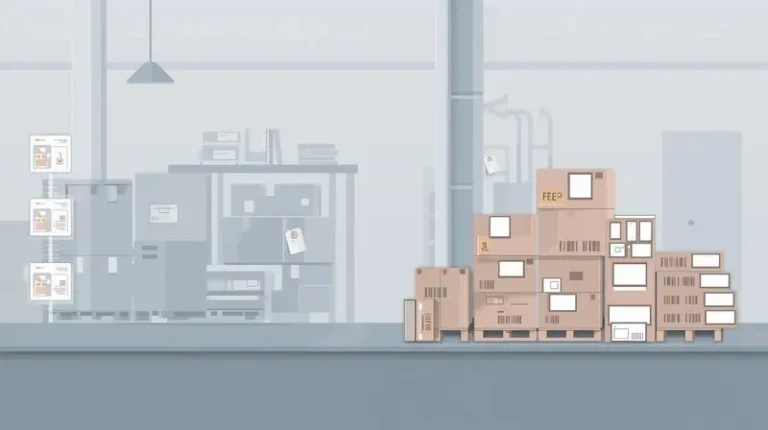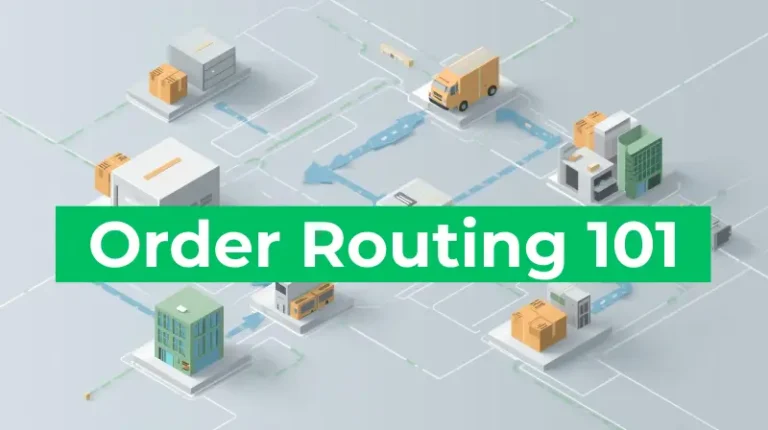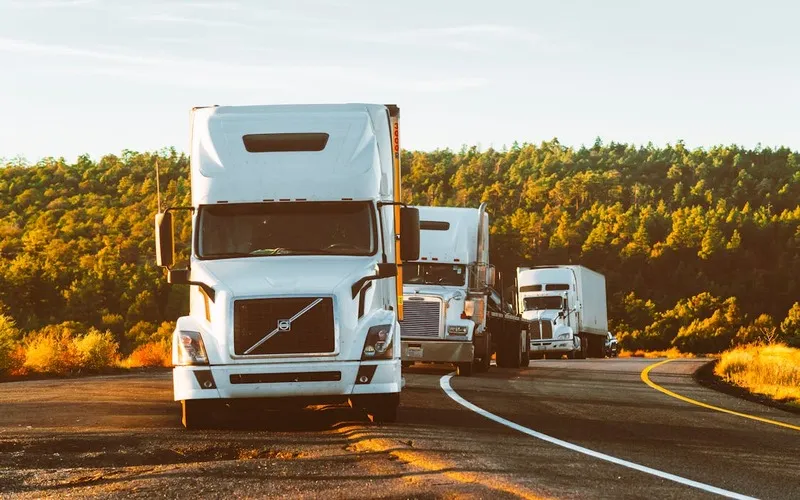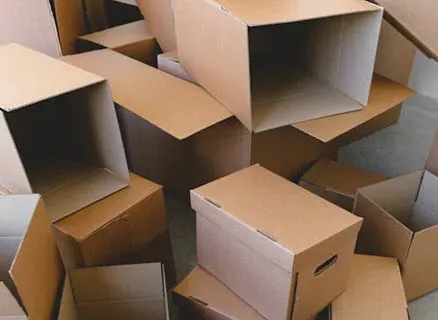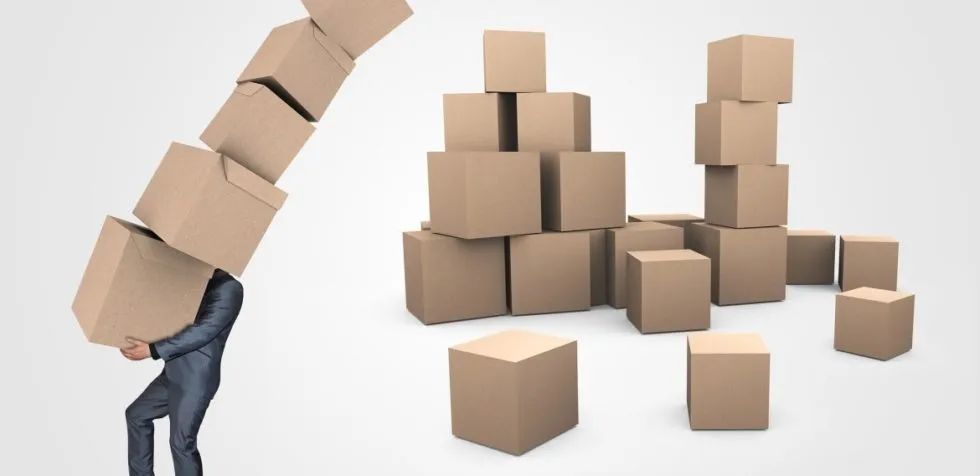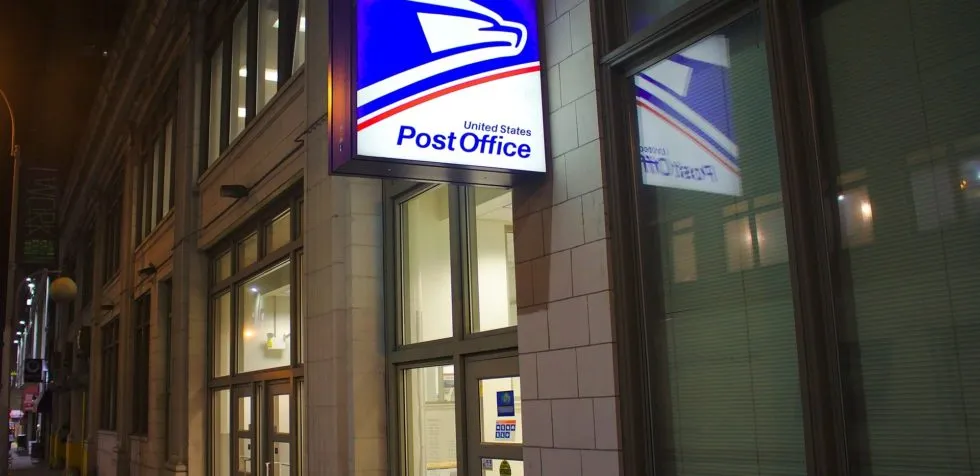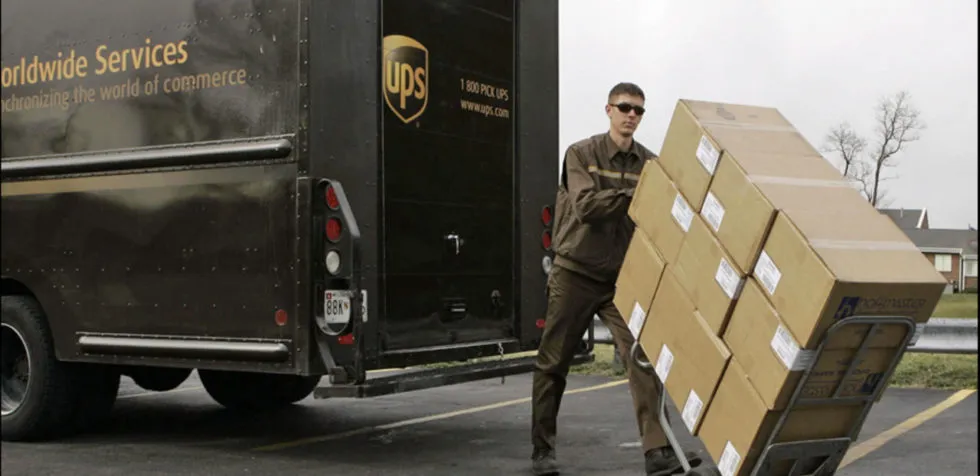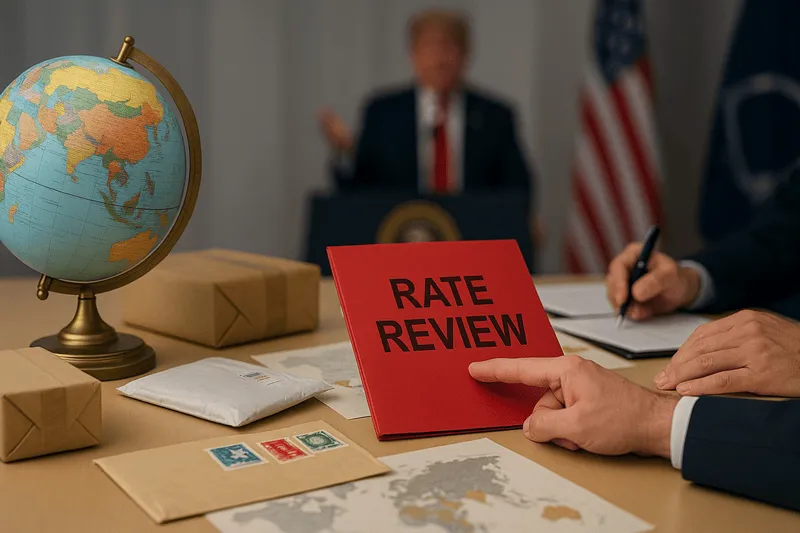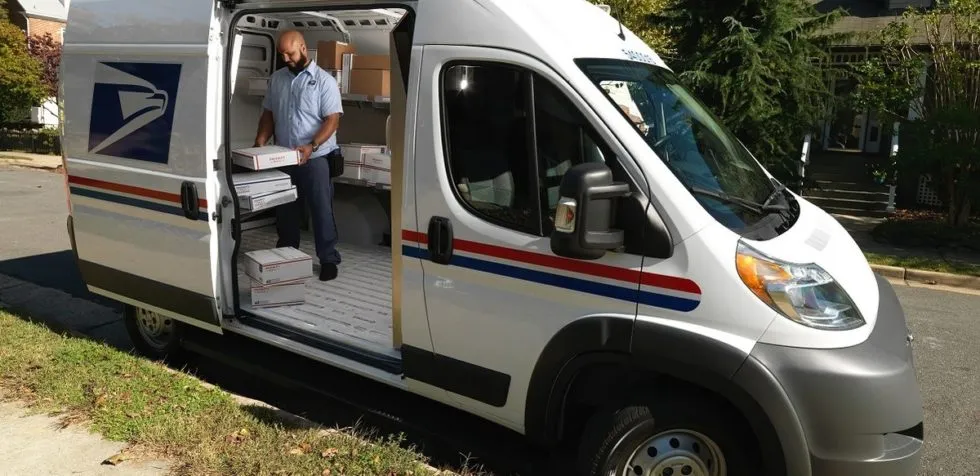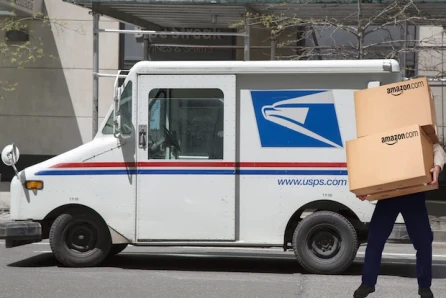PONY UP Act: USPS Could Be Paying for Late Deliveries
In this article
 3 minutes
3 minutes
Mail delivery has become increasingly unreliable, and lawmakers are taking action. Legislators have reintroduced the PONY UP Act, a bold legislative effort to address chronic delays in postal service by holding the United States Postal Service financially responsible for late deliveries. The proposal has sparked discussions across industries, particularly within the e-commerce sector, which relies heavily on timely delivery to meet customer expectations. If passed, the legislation could introduce new financial liabilities for USPS while reshaping the landscape for online sellers and consumers alike.
Understanding the PONY UP Act
Formally known as the “Penalizing Oversight Neglecting Your Universal Postal Service” (PONY UP) Act, this bill seeks to reimburse consumers for late fees incurred due to delayed USPS deliveries. Specifically, it would require USPS to cover penalties arising from tardy bill payments (e.g., that pesky $35 late fee when a credit card payment is not received on time) when the delay results from late mail service. The legislation is in response to many complaints about unreliable delivery service that has led to financial burdens for its users.
The regulation would apply to situations where a bill, notice, or payment was mailed with ample time to arrive before its due date but was delivered late. It also proposes an online and in-person claims process for reimbursement and an appeal mechanism for denied claims. Additionally, the legislation mandates annual reports on USPS delivery performance to improve transparency and oversight.
Why the PONY UP Act is Being Introduced
USPS has faced increasing scrutiny over delivery inefficiencies, particularly in rural areas, which have frequent delays. Audits have revealed significant lags in sorting and delivering mail. Reports cite instances of late medical payments, utility bills, and even time-sensitive shipments such as live poultry for agricultural businesses. These delays have led to growing frustration among consumers and businesses that depend on consistent delivery expectations for financial stability and operational continuity.
Legislators argue that the PONY UP Act will create a stronger incentive for USPS to prioritize service reliability. By attaching financial consequences to delivery failures, the bill aims to ensure that USPS meets its congressionally mandated six-day delivery obligation while providing relief to those negatively affected by missed service level agreements (SLAs).
Let AI Optimize Your Shipping and Boost Profits
Cahoot.ai software selects the best shipping option for every order—saving you time and money automatically. No Human Required.
See AI in ActionPotential Impacts on E-Commerce
If the PONY UP Act becomes law, it could mean several things for the e-commerce industry, which relies heavily on USPS for daily business operations:
- Improved Delivery Performance: The prospect of financial penalties may push USPS to improve efficiency. Fewer delays translate to increased consumer confidence in delivery expectations for online purchases.
- Rising Shipping Costs: USPS may need to increase shipping rates to offset potential investments required to meet the expectations established by law. Those fees would be passed onto e-commerce businesses, pushing operational costs higher and creating margin pressure for merchants of small, light, and inexpensive items that are heavily reliant on USPS for affordable shipping solutions to turn a profit. They may be unduly forced to adjust product and pricing strategies and/or explore alternative carriers to remain viable.
- Greater Emphasis on Delivery Guarantees: Online retailers that depend on USPS’s Priority Mail and other expedited services may benefit from increased accountability, as USPS would be compelled to meet delivery SLAs. Late deliveries are rarely the result of late shipping. E-commerce businesses, as a whole, are very good at meeting their customers’ on-time shipping obligations. As the carrier’s delivery reliability increases, so does consumer trust, resulting in more online shopping and, thus, more growth and prosperity for the industry.
- Changes in Carrier Strategies: One e-commerce Seller told me, “Almost anything is better than USPS; I’m confident that a messenger pigeon is better than USPS.” As confidence in USPS increases, more merchants who had lost faith in the service and migrated to more reliable national carriers may reintroduce lower-cost USPS services to improve their profit margins.
Shipping and logistics are pivotal to the success of online retail, and any regulatory changes affecting USPS operations will inevitably profoundly impact the industry. Retailers and brands should monitor legislative developments and be prepared to adapt to potential cost increases or modifications to service levels.
Summary
The PONY UP Act is an effort to address longstanding issues with USPS delivery delays. It provides a mechanism for consumer protection while aiming to drive operational improvements. While primarily intended to target and remedy first-class mail service issues, its potential impact on e-commerce remains speculative. While increased accountability could enhance service reliability, shipping rate hikes could challenge Sellers dependent on affordable delivery options.

Turn Returns Into New Revenue

2025 NMFC Changes for LTL Freight Shipments (Improved Classification)
The National Motor Freight Classification (NMFC) system was established in 1936 to standardize Less-Than-Truckload (LTL) shipping. It uses a uniform system for classifying commodities to ensure consistency and fairness in pricing and handling. The NMFC system is undergoing a significant transformation for the first time in decades. Starting July 19, 2025, the industry will begin a multi-phased shift to a predominantly density-based classification system to achieve greater clarity and efficiency for all stakeholders in the LTL supply chain.
Traditionally, the NMFC has evaluated freight based on 4 characteristics: density, stowability, handling, and liability. While comprehensive, this complex system leads to frequent misinterpretations and disputes between shippers and carriers (which can drag out for years). The 2025 update intends to streamline this process by using density as the primary means for classifying the vast majority of freight shipments, while the remaining 3 characteristics will be reserved for classifying only the more complicated commodities. Let’s look at each in more detail:
- Density refers to how much a shipment weighs compared to the space it occupies. Higher density typically results in a lower freight class and lower shipping costs because these shipments take up less space on a truck. For example, a small box of steel parts weighing 200 pounds in a small cubic space is denser than a large box of pillows weighing 200 pounds.
- Handling considers how easy or difficult it is to move freight. Heavy, fragile, oddly shaped, or hazardous items often require special handling, increasing the freight class and, thus, the cost. For example, a granite countertop may need extra care due to its weight and fragility, while a box of sand is easier to manage despite being dense.
- Stowability refers to how well the shipment fits in the carrier’s space (e.g., a 53-foot trailer). Again, size, shape, or transportation restrictions on certain items (e.g., hazardous materials) can make freight more challenging to load on a truck (think about a poorly played game of Tetris), leading to higher costs. For example, a shipment of pipes with irregular protrusions may leave unusable gaps in the truck. In contrast, neatly packed boxes fit more efficiently, allowing for the truck to move more items in a given move from point A to point B.
- Liability measures the risk associated with the goods, including susceptibility to damage, potential to harm other goods, perishability, and/or hazardous considerations. For example, a shipment of fresh produce is perishable and requires more careful handling and faster transit than a carton of vitamins, which is durable and lower risk.
Let AI Optimize Your Shipping and Boost Profits
Cahoot.ai software selects the best shipping option for every order—saving you time and money automatically. No Human Required.
See AI in ActionKey Changes Coming in 2025
The new NMFC structure introduces several significant changes, notably the expansion of the density scale. Moving from 11 subprovisions to 13, the system now includes classes 50 and 55 for heavy, dense products. Approximately 5,000 commodity listings will be affected, with an estimated 3,500 single-class items moving to the new subcategories.
The updated classification system maintains all 4 of the transportation characteristics. Still, as noted above, it aims to simplify the classification process by defaulting to density-based classification when NO special handling, stowability, or liability concerns are known. In addition, products requiring special consideration will be marked with a new unique identifier, making it easier to identify freight that needs additional attention.
The transition begins with the public release of Docket 2025-1 on January 30, 2025, and the final implementation becomes effective on Saturday, July 19, 2025. Docket 2025-1 is the list of NMFC codes considered for class changes based on the new density scale (nearly 40%). Once the list is finalized, changes will be made before the effective date.
Impact on Shippers and Third-Party Logistics (3PL) Companies
The simplified system should make identifying the correct freight classes for most shipments easier but still rely on accurately measuring and reporting “handling unit” dimensions and weight (pallet length, width, height, and weight) used to calculate density. In short, Shippers and 3PLs can multiply length x width x height in inches, divide by 1,728 to convert cubic inches to cubic feet, and then divide the shipment weight by the cubic feet to determine pounds per cubic foot (PCF). Don’t forget to include the ~6-inch height and ~30-pound weight of the pallets. Carriers will still remeasure/reweigh and reclass/rebill for underreported shipment details.
ShipStation vs. Cahoot: 21x Faster, Real Results
Get the inside scoop on how a leading merchant switched from ShipStation to Cahoot—and what happened next. See it to believe it!
See the 21x DifferencePreparing for the Transition
To prepare for these changes, organizations should:
- Train Personnel: Educate staff on density calculations and measurement techniques. Providing training in advance will help reduce errors.
- Start Now: Begin creating shipments with accurate dimensions and weights now (if it’s not already being done), so it becomes second nature and prevents tendering delays later.
- Assess Current Shipping Pricing: Evaluate historical shipment pricing and contact carriers to identify areas where the updated density-based classifications might affect pricing.
- Implement Reliable Processes: Establish workflows to ensure every shipment is measured, weighed, and documented correctly before leaving the dock. Documenting shipments early could help resolve disputes more quickly.
Summary
While the initial transition may present challenges, the long-term benefits of modernizing the NMFC system may be considerable. The simplified, standardized approach should reduce classification errors (and thus, disputes), improve and quicken communication between parties, and create a more efficient LTL shipping workflow. Future dockets beyond 2025-1 will continue to refine the system, particularly for freight with specific handling, stowability, or liability requirements. Guidance on the timing of future dockets (NMFC improvements) has not been announced.

Turn Returns Into New Revenue

UPS Announces Astonishing SurePost Rate Increases for 2025
UPS SurePost is a hybrid delivery service that integrates UPS’s network with USPS’s extended final-mile reach and capabilities. It’s a partnership between two competitors playing to each of their strengths to achieve greater cost efficiency, and it’s set to undergo notable changes in 2025. In particular, the primary benefit of SurePost, the lower cost of getting packages into the hands of their intended recipients, will see a substantial rate hike and service modifications in 2025, marking a profound shift in what ecommerce shippers have come to expect from the service. Understanding these developments is crucial for merchants to adapt their operations and optimize margins next year.
Key Changes to UPS SurePost Rates in 2025
Starting January 13, 2025, packages weighing 1 to 9 pounds will see a 9.9% price increase, while those weighing 10 to 70 pounds will increase 5.9 to 7.1%. Additionally, surcharges for deliveries to less densely populated areas will increase dramatically. The Delivery Area Surcharge (DAS) will rise 61.8% to $6.15, and the Extended Delivery Area Surcharge will climb a whopping 69.4% to $8.30. These changes reflect the broader trend of rising costs of last-mile delivery services.
In addition to these changes, the U.S. Postal Service will discontinue the allowance of dual shipping labels starting January 1, 2025, as it looks to increase its network’s efficiency and gain more direct customers for USPS Ground Advantage Services, which has a faster delivery SLA than SurePost by ~2 days on average. This will limit UPS’s package routing flexibility which currently allows them to decide which agency will deliver the package to the doorstep much later in the sortation workflow. Now, shippers must use labels that indicate the responsible final mile delivery agent when the package is accepted for processing.
Slash Your Fulfillment Costs by Up to 30%
Cut shipping expenses by 30% and boost profit with Cahoot's AI-optimized fulfillment services and modern tech —no overheads and no humans required!
I'm Interested in Saving Time and MoneyComparisons Across National Carriers
UPS’s SurePost fee changes align with what we see in the broader shipping industry. USPS will increase rates for its Parcel Select service by an average of 9.2%, depending on where the package enters the postal network, while its Ground Advantage service will rise by 3.2% for commercial accounts. FedEx is implementing various surcharges and rate adjustments, including a new $1.50 inbound processing fee, expanded fuel surcharges to include address correction and dangerous goods, and implementing their own DAS price increases. So, although UPS’s SurePost increases are significant, they reflect all the national carriers’ efforts to address rising operational costs and align pricing with market demands.
Implications for E-commerce Merchants
All shipping rate hikes pose challenges for e-commerce businesses, particularly those with razor-thin margins that rely on lower-cost carrier services to operate profitably. In many cases, the increased shipping costs trickle down to the consumer through higher pricing because online retailers cannot shoulder the entire burden. We may eventually observe altered consumer spending behavior, forcing Sellers to find new opportunities to reduce costs and return the business to healthy and sustainable margins.
Strategic Adjustments for Merchants
Several strategies could be employed to help reduce shipping costs:
- Shipping Cost Analysis and Carrier Negotiations: Conduct a detailed shipping cost analysis to identify order distribution across the product catalog and which SKUs, customers, regions, channels, etc., will contribute to increased cost. Use the data to adjust the carrier/service mix, matching delivery date promises with carrier/service SLAs and pricing. Identify opportunities to negotiate carrier contracts to reduce shipping costs in other areas, such as different package sizes, weights, variances, zones, and alternative delivery services, to minimize the impact of the new rate changes (or explore alternative carriers and services in particular, regional carriers that are trying to compete with the large national carriers to gain market share).
- Shipping Optimization: Leverage technologies such as next-generation shipping label software for AI-assisted rate shipping, automatically creating optimal shipping labels and optimizing fulfillment across inventory locations (in and out of the ‘network’).
- Free Shipping Adjustments: Retailers offering free shipping may either need to raise minimum order thresholds to balance customer expectations with the new financial realities or, as mentioned above, intelligently merge the new overall expected transportation cost into the complete product catalog pricing to minimize or offset the financial burden.
- Packaging Optimization: Review packaging (boxes, mailers) and void fill (air cushions, paper) pricing and optimize for smaller packages and less void fill where possible. Also, shift to less expensive padded mailers. Use intelligent cartonization software to pack shipments efficiently to reduce carrier shipping costs and packaging waste. Negotiate with packaging suppliers and consider taking larger deliveries less frequently or pre-buying supplies to take advantage of volume/commitment discounts.
Looking for a New 3PL? Start with this Free RFP Template
Cut weeks off your selection process. Avoid pitfalls. Get the only 3PL RFP checklist built for ecommerce brands, absolutely free.
Get My Free 3PL RFPSummary
As carriers adjust to ever-rising costs by updating their fee structures and passing costs on to their customers, e-commerce brands and retailers must also determine how to manage the rising costs by cutting elsewhere or passing all or part of the costs further to their customers.
The last-mile delivery space is continuously evolving as new solutions are brought to market and innovations applied to existing technologies and services continue to mature. There are a dozen prominent regional carriers that could help reduce shipping costs for some percentage of shipments. Or, consider partnering with fulfillment experts to distribute the high-volume inventory and capture meaningful margin savings by shipping orders from warehouses closer to the customer.
In any case, one thing is clear…costs continue to rise year after year, and the solution isn’t one-dimensional. To stay competitive and grow a successful online commerce business, there needs to be a fundamental shift in how e-commerce order fulfillment and reverse logistics are managed.

Turn Returns Into New Revenue

Efficient Shippers Use Smart Cartonization Software to Save Big
Shipping costs are one of the largest cost centers for any e-commerce business and are second only to labor costs. With last-mile expenses increasing yearly, finding ways to reduce these costs is more important than ever. Leveraging technology to optimize shipping costs by right-sizing packaging can reduce shipping expenses significantly while improving operational efficiency and positively impacting the environment.
What is Cartonization Software and Parcel Packing Intelligence
One of the most effective ways to reduce shipping costs is to right-size the packaging. The reason is that shipping rates are based on weight. Still, shippers are charged the higher of the actual shipment weight (product in a box) OR the dimensional weight (the package volume in cubic inches turned into a weight value for rating purposes).
Efficient Shippers have reported saving over six figures just by right-sizing their packaging. Additional savings come from lower packaging costs from using less packaging. Further savings are achieved by reducing or eliminating dunnage required to fill the void in the larger box so items ship safely, less tape is used, etc.
The average return rate for ecommerce orders is in the 15 to 30% range (much higher for apparel); right-sizing the packaging would also reduce the cost of return shipping when the original packaging can be re-used for reverse logistics.
Cartonization software (or smart cartonization features built into Order Management Systems or Multi-Carrier Shipping and Fulfillment Software such as Cahoot) can help automate selecting the best packaging for each order, even for complex shipments containing multiple product and quantity configurations. For example, Cahoot software evaluates the dimensions of the items being shipped and auto-selects the smallest box the products can safely ship in from a list of available options in stock. By using cartonization capabilities prebuilt into software like Cahoot, ecommerce merchants can ensure they are shipping orders in the most cost-effective packaging rather than relying on warehouse staff members to guess the correct size. No human means no judgment is needed, and human errors are eliminated.
A crucial part of parcel packing intelligence, i.e., right-sizing shipments is to stock a wide variety of box, non-corrugate packaging and mailer sizes. Many shippers only stock a limited range of packaging sizes, which forces them to use larger boxes when smaller ones would suffice. Expanding the available box sizes can reduce the risk of paying to ship a lot of air. Some shipping and fulfillment solutions even support the tracking and management of packaging inventory, including cost, reorder points, etc.
It’s worth noting that cartonization and packing tools are useless without accurate dimensional data. Easy AI-based tools such as the Qboid M2 Perceptor Mobile Dimensioning handheld device have recently become available, making capturing these details a breeze.
Let AI Optimize Your Shipping and Boost Profits
Cahoot.ai software selects the best shipping option for every order—saving you time and money automatically. No Human Required.
See AI in ActionIncrease Sales and Profits through Cartonization Software
For Sellers that can pass shipping costs to their customers, right-sizing packaging increases profits and conversions through more competitive ‘all-in’ product pricing, leading to higher revenues.
Reduce Waste using Smart Cartonization
While used cardboard boxes can be recycled, much of it still ends up in a landfill with a negative environmental impact and a higher carbon footprint. So, right-sizing shipping supplies also helps the planet.
The best way to minimize cost and environmental impact is not to use overpacks at all – ship the items in their original manufacturer packaging. Amazon’s SIPP program (Ships in Product Packaging) was opened to Amazon FBA Sellers in early 2024 to reduce costs and improve sustainability. It’s generally been regarded as successful.
It’s recommended to collaborate with suppliers to design product packaging to optimize for shipping costs, staying away from the surcharges carriers impose on “oversize” shipments.
Dimensional Weight
As mentioned above, DIM weight considers the package’s volume, meaning large boxes, even when filled with light products, can incur substantial shipping charges.
The DIM weight is calculated by multiplying the package’s length, width, and height, then dividing by a DIM factor set by the carrier. FedEx and UPS typically use a DIM factor 139 for domestic US shipments, while the USPS uses 166. The higher the DIM factor, the more “air” you can include in a package before triggering the DIM weight pricing.
For example, if you use a 12″x12″x12″ carton, it will be billed as a 13-pound package by UPS and FedEx based on its volume, even if the actual contents weigh much less (a box of cotton candy, as an extreme example). Over time, these minor discrepancies can add up to thousands of dollars in extra shipping fees. Switching to smaller cartons that more appropriately fit your products can help reduce these DIM weight charges. It also minimizes the need for excess void fill, such as bubble wrap or packing peanuts, which adds cost and waste to each shipment.
An example:
Shipping this 2.25 lb product 8 zones in a slightly larger box than the product (8 x 5 x 5) will cost $9.52 using USPS Ground Advantage. Shipping this 2.25 lb product 8 zones in an adequately fitted box (8 x 5 x 3) will only cost $8.35 using USPS Ground Advantage. This is only 2 inches longer on one side but represents 40% air (200 cubic inches vs. 120 cubic inches). That’s over 12% savings on just one shipment and not that egregious of an example. And not including all the waste saved as described above.
Summary
Reducing operations expenses must be a forethought to achieve continued business success. By utilizing technology like cartonization software to optimize shipment packaging, not only are shipping cost savings guaranteed, but the cost of the supplies goes down, operational efficiency goes up, and more sustainable business practices not only result in lower carbon emissions and less waste but it can also enhance brand reputation.
Related Blog Posts
How Much is Free Shipping REALLY Costing You?
In this article
Gone are the days when you could actually make money on shipping. Merchants are all too willing to move to a free shipping model without being aware of the entire cost of shipping a package. If you’re offering free shipping, it’s probably costing you 30 percent MORE than you think. If you talk to many companies that offer free shipping and ask, “How can you afford this?” Their answer: “I work the cost of shipping into the product.”
There are many other costs involved in shipping a product in addition to postage. Are you monitoring your delivery area surcharge (DAS) or extended delivery area surcharge (EDAS)? Most carriers have these charges.
A good exercise for companies doing ecommerce order fulfillment is to look at your average monthly packaging, warehouse labor and credit card fees, then divide that total by the number of packages you shipped

Turn Returns Into New Revenue

Post Office Wants to Shift Focus from Mail to Ecommerce Deliveries
In this article
USPS has floated a new proposal to Congress that would see it reducing mail delivery from six to five days a week while expanding packaging deliveries to seven days.
The shipping world has changed dramatically over the past decade. Since 2007, total U.S. mail volume has declined 31% to 146 million pieces, including a 41% drop in first-class mail, its most profitable product. At the same time, ecommerce has exploded, offering a way to plug the lost revenue while also adding burden to USPS operations as it handles more packages. USPS has already started to dip its toes into 7-day a week delivery to manage the 20 million packages it averages daily. It now delivers some Amazon.com packages on Sundays and also other ecommerce retail fulfillment during the busy Christmas holiday season.
The agency lost $3.9 billion in 2018, its 12th straight year of losses. According to the agency, this move better reflects the market conditions and would save it billions of dollars per year. Republican and Democratic members of Congress, however are opposed to making a change to mail deliveries.

Turn Returns Into New Revenue

Teamsters Vote Down UPS Contract but Negotiations Continue
In this article
While the majority of UPS workers represented by the Teamsters union voted against a new contract, negotiations will continue as turnout was low and the no votes didn’t meet the threshold for killing the deal.
According to the Wall Street Journal, 54.3% of 243,000 Teamsters members that include UPS drivers, sorters and other workers voted against a new five-year contract Friday, while 62.1% of 11,000 freight workers voted down a separate agreement; several regional and local deals were voted down as well.
Union rules require a two-thirds vote to reject a contract when less than 50% of members vote.

Turn Returns Into New Revenue

Global Postal System Fast-Tracks Rate Review After Trump Pullout Threat
In this article
By Heidi Vogt
Discounts established to help less-developed countries have continued to apply even as China has become a major e-commerce shipper.
WASHINGTON—A Trump administration threat to pull out of a global mail system over its discounted shipping rates from China could spur a change in those rates as early as April, the head of the United Nations agency that oversees the system said.The U.S. last week started a year long process to withdraw from the 144-year-old Universal Postal Union because it had failed to eliminate international discounts. Those discounts, aimed at helping developing countries, have continued to apply to China even as it has grown to become the world’s second-largest economy. They can make it cheaper to ship small packages from China to the U.S. than from locations within the U.S.
The move was the latest salvo by the Trump administration against China and a reminder of the president’s willingness to abandon international organizations that he says don’t help U.S. interests. American manufacturers welcomed the move, saying the flood of cheap goods from China undercut their business. The UPU, which is now holding previously scheduled council meetings, commissioned a report Tuesday that is the first step toward fast-tracking new rates, Director General Bishar Hussein said in an interview.
“If we work fast enough, and the member countries are all in consensus on these issues and decisions are made, by April next year I think it is a possibility,” Mr. Hussein said.The discounts also benefit countries including Russia and Mexico. The U.S. has stressed that its decision isn’t only about China, though that obviously is a large factor. Administration officials have said the lower rates cost the U.S. Postal Service some $300 million a year, with discounts ranging from 40% to 70%. Mr. Hussein said he welcomed the move by the U.S. if it manages to reform the group’s “archaic” rates.
Slash Your Fulfillment Costs by Up to 30%
Cut shipping expenses by 30% and boost profit with Cahoot's AI-optimized fulfillment services and modern tech —no overheads and no humans required!
I'm Interested in Saving Time and Money“Now with the U.S. coming in and saying, ‘Sorry, enough is enough,’ I think this is going to take the conversation to another level, and I’m very happy to see that,” Mr. Hussein said.
Mr. Hussein stressed that even a fast-tracked process has many steps, including the research report, a proposal and a vote by members. At least half of the organization’s 192 members have to vote for a proposal to be considered, and it can pass only with a two-thirds majority.
If the U.S. were to withdraw from the UPU, it would lose access to global processing and coding systems that make international mail possible, and it would have to negotiate bilateral postal agreements with every individual country, Mr. Hussein said. The U.S. has said it hopes to negotiate a solution that keeps it from having to withdraw from the UPU, but also has said it is proceeding with a plan to institute “self-declared” rates that could take effect within six months.

Turn Returns Into New Revenue

Managing Through Record 2019 USPS Rate Increases
In this article
Recently, the USPS proposed a record price increase. If approved, which is expected, the higher rates will go into effect on Jan. 27, 2019. This will be the biggest rate increase in USPS history. Amazon’s retail operating income would take a 5 percent hit from shipping cost inflation if the new rates take effect, according to Barclays.
Here are some of the significant proposed 2019 USPS Shipping rate changes:
- The elimination of Commercial Plus Pricing (CPP), where now Priority Mail pricing will match Commercial Base Pricing (CBP). Many e-commerce and subscription trade shippers will be facing a painful price increase with the elimination of CPP programs.
- A conservative 5.9 percent Priority Mail increase is expected, while First Class Flat Pricing will change to zone-based pricing with an expected 11.9 percent increase. For shippers with a high proportion of outer zone shipments, the increase will be appreciably higher (as much as 21 percent).
- Perhaps most concerning is the pending reaction of UPS and FedEx as they re-evaluate their “hybrid” postal delivery products that use the USPS for last-mile delivery. Buried in the postal rate change are increases ranging from 9 percent to 30 percent on the work-share rate structures used by UPS and FedEx.

Turn Returns Into New Revenue

The Post Office Wants to Raise the Fees it Charges Amazon and Other Shippers
In this article
The U.S. Postal Service has proposed a 9 to 12 percent increase in fees for the shipping service used by Amazon, just months after President Donald Trump criticized the USPS, saying it gives Amazon too good of a deal.
The parcel select service, which is also used by United Parcel Service and FedEx, is the last and typically the most expensive step in the shipping process that gets the packages to customers’ doorsteps. The USPS proposed a 9.3 percent increase on this service for packages weighing over one pound and a 12.3 percent increase on lighter packages.
Trump issued an executive order in April to set up a task force to examine the USPS, claiming that it was on an “unsustainable financial path.” He’s also tweeted that the USPS is Amazon’s “delivery boy” and doesn’t make money from Amazon’s business.

Turn Returns Into New Revenue


